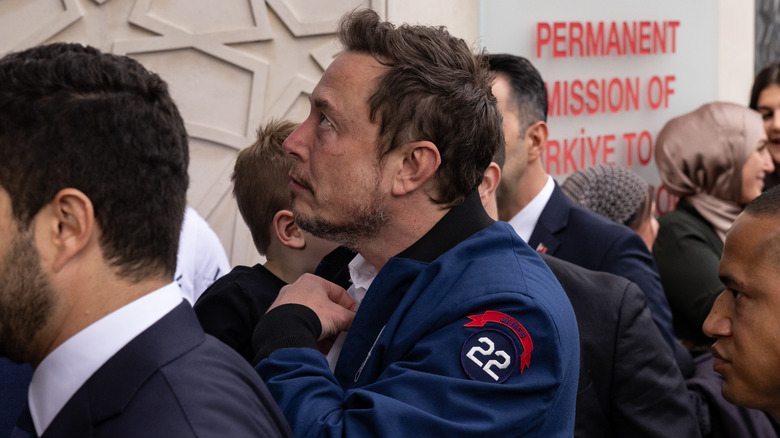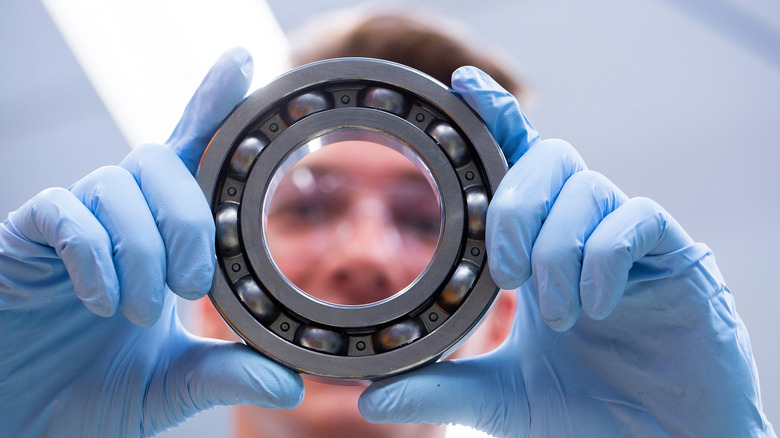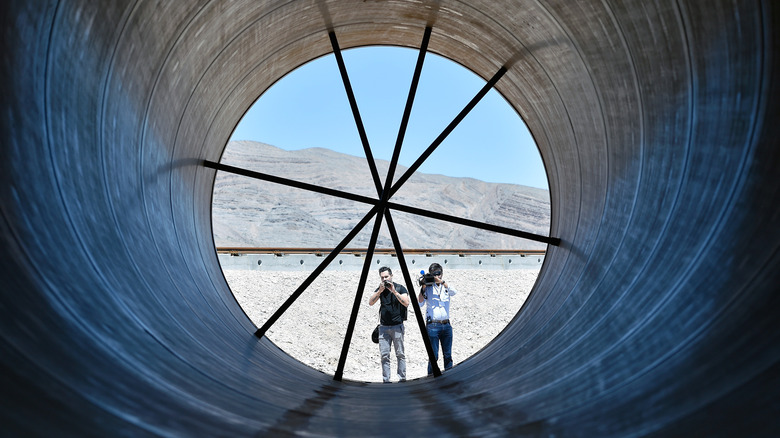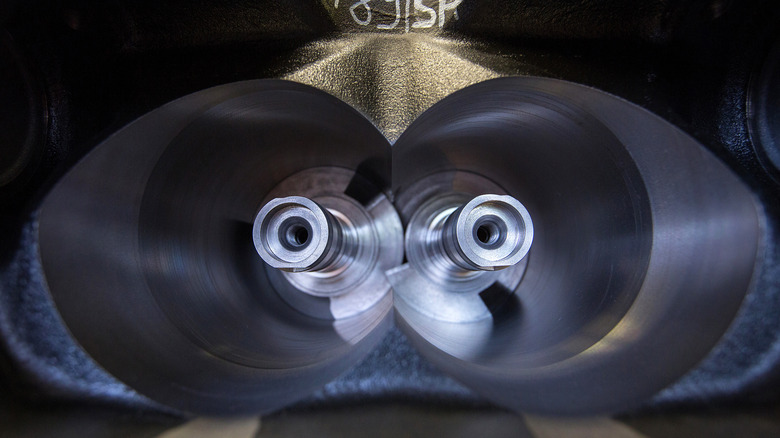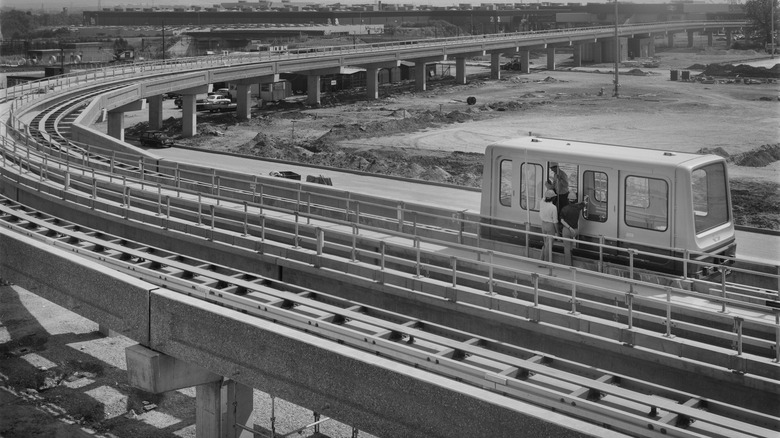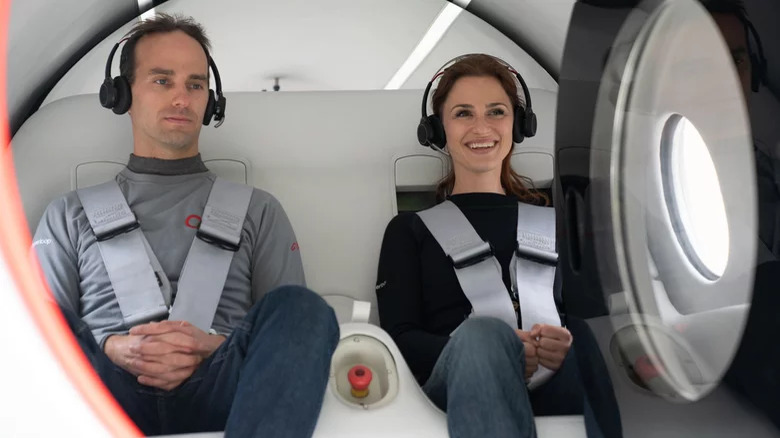5 Incredible Details About Elon Musk's Hyperloop
The ever-eccentric Elon Musk has had a lot of ideas that, if successful, could have a huge impact on human life. While colonizing space and having our needs met by robot butlers are both nice concepts, they are pretty far out and will likely be inaccessible to the general public if they ever do happen. But one of the schemes associated with Musk, a "hyperloop" transport system, is both attainable and could be accessible to anyone who can currently afford a Greyhound bus ticket.
A functional hyperloop would allow cheap, safe, environmentally friendly, surface-level travel at passenger jet speeds. When hyping up the hyperloop, Musk and company Tesla have previously stated that it could potentially cover the 350-mile distance between Los Angeles and San Francisco in just 35 minutes. The transport system may also be able to power itself through a combination of batteries and solar panels throughout its route, costing passengers as little as $20 a ticket. While this sounds amazing, the Hyperloop project gets outlandish the more you dig into it. Here are five of the most surprising facts about the train in a tube that has the potential to revolutionize public transport.
It's an open source project
Although Musk has threatened to build a hyperloop himself on a number of occasions, that wasn't his original intention. Instead, the whole thing actually centered around a white paper that Tesla researched and produced back in 2013. The Hyperloop Alpha paper contains plenty of research and answers to some of the more difficult questions standing between the hyperloop as a concept, and the transport solution as a reality. All of that information is completely free to use and incorporate into other designs — it's essentially "open source," in a similar way to plenty of key software. Open sourcing something traditionally does two things: It provides a solid and functional foundation while allowing smaller contributors to chip in along the way
Musk's commitment to the hyperloop didn't end in 2013, and the billionaire actually funded a Hyperloop Competition for several years, which rewarded independent teams and companies for coming up with the best interpretation of the transport method. The COVID-19 pandemic seems to have killed the event, though it is coming back in some form. Next year, The Boring Company is launching "Not A Boring Competition" which includes something similar to the old hyperloop contest.
It could theoretically go trans-Atlantic
While the 300-mile stretch between Los Angeles and San Francisco has long been noted as an ideal route for the first commercial hyperloop, its potential goes far beyond that. There's a suggestion that a hyperloop could one day stretch from Europe to the continental United States.
Tests have been carried out on a tunnel that could stretch under the ocean with the Netherlands-based Maritime Research Institute being amongst those exploring the concept. The hyperloop on its own would be incredibly difficult to engineer, and the challenge of creating a tunnel under the waves adds numerous layers of complexity to the project. But if it comes off, the benefits would be immense.
The speeds a hyperloop can offer rival those of air travel — meaning the tunnel could well be a viable alternative for trans-Atlantic travelers. The main benefits are environmental, as a hyperloop is a far greener option than flying. There is also a chance it could leave to cheaper travel, though you can't cram as many solar panels onto an underwater tube as you can on a surface-level hyperloop.
Air is a major issue
Air pressure is the Hyperloop's biggest energy issue. Wind resistance can slow a vehicle of any kind down significantly, and force it to use more energy to get around. As a result, the Hyperloop tube is designed to be a partial vacuum. A perfect vacuum would be ideal, but those are very difficult to produce in ideal circumstances. Pulling a perfect vacuum in a tube that is hundreds of miles long and contains many entry and exit points is as close to impossible as you can get with current technology.
Still, a partial vacuum created and maintained by a series of pumps along the track will allow the hyperloop to meet both its speed and efficiency targets. There is still one major issue, and that is known as the "Kantrowitz Limit." Even in a partial vacuum, there is still air to be compressed. The Hyperloop capsule traveling down the tube has the potential to act like the plunger in a syringe, compressing the air in front of said capsule until it gets dense enough to slow everything down. Over short distances, there isn't enough air to cause a problem, but over hundreds of miles it's a serious problem.
Where there's a problem, there is a solution. Currently Tesla believes that the best way around the Kantrowitz Limit involves installing an air compression which will suck the sparse air from in front of the capsule and distribute it behind the vehicle as needed.
Hyperloop's roots lie in a century-old piece of tech
While the hyperloop on the whole seems like a futuristic piece of science fiction, one of its core concepts is over a century old. The Hyperloop's speed and efficiency is largely achieved by decreasing resistance. Air resistance is thwarted by pulling a partial vacuum on the system's tubes, and the "track" that the capsules run on is resistance-free too.
This is because the Hyperloop is built on a "maglev" system. This system is also used by Japan's famous bullet train and relies on an electromagnetic track which can be used to make the train levitate and propel it along.
Dr. Robert Goddard and French electrician Emile Bachelet both proposed the idea of a Maglev train back in the early 1900s, and the first piece of Maglev public transport appeared in Birmingham, U.K., during the 1980s. While Birmingham's Maglev was pretty slow, and only designed to shuttle people between the city's train station and airport, the bullet train has shown how far the concept can go. Maglev alone has a potential top speed of 375 mph, while a Hyperloop could potentially double that.
Another billionaire beat Musk to it
While Elon Musk is the tech pioneer you're most likely to associate with a hyperloop, another billionaire has actually beaten the Tesla owner to the punch when it comes to demonstrating a working version of the transport system. Richard Branson, the same guy behind Virgin Galactic, Virgin Atlantic, and numerous other businesses, has also funded a working hyperloop prototype.
The Virgin Hyperloop involved a 500-meter test loop in Las Vegas, and is on record as the first successful test of the concept involving human passengers. While Virgin was behind the first human journey in a hyperloop, and has also eyed up the same Los Angeles to San Francisco route Musk has previously suggested, there is strong evidence that the public transport aspect of its hyperloop project is being scaled back. In early 2022, VIrgin Hyperloop laid off 111 staff and allegedly decided to shift its focus from passenger travel to freight.
